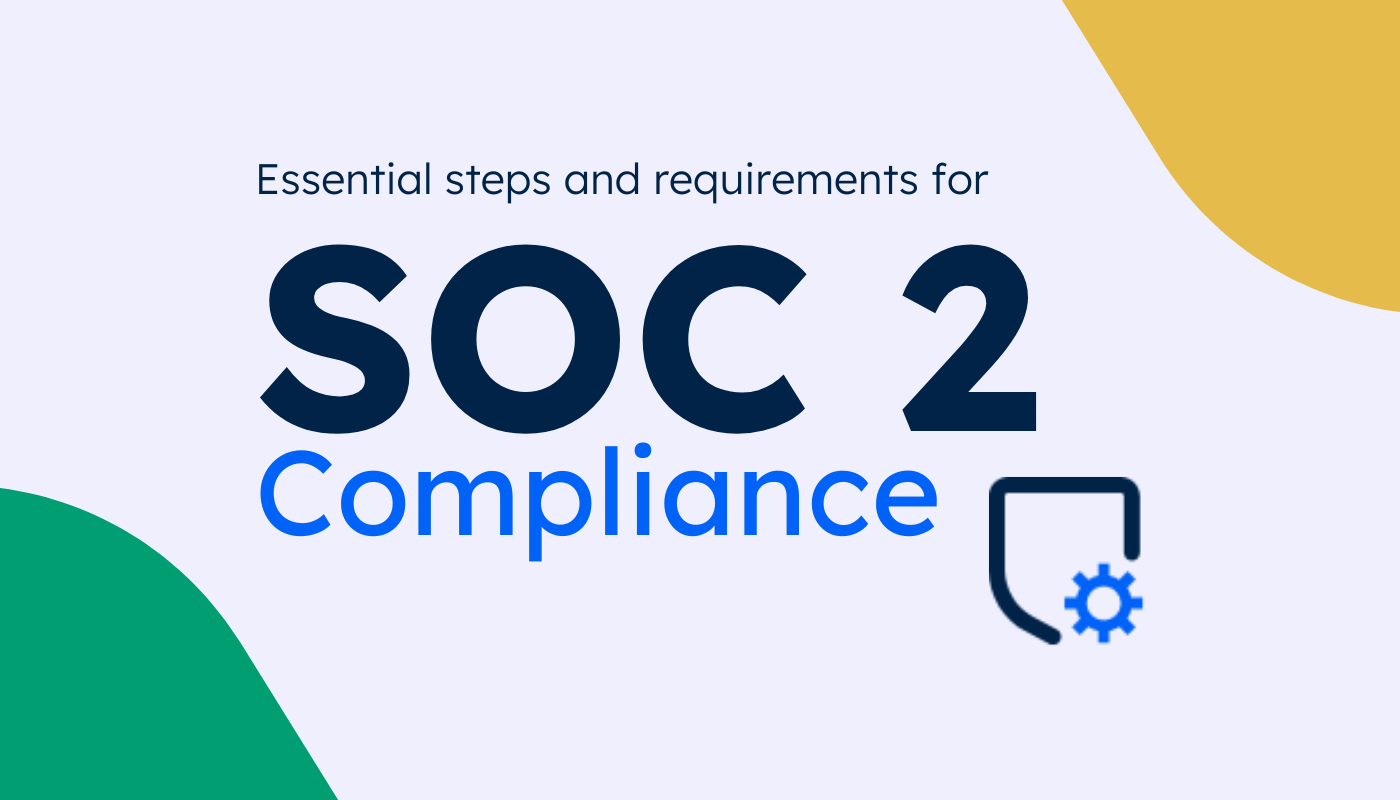
Essential Steps and Requirements for SOC 2 Compliance
SOC 2 framework is based on a set of Trust Services Criteria (TSC) defined by the AICPA. Here are the steps to independent SOC 2 assessments & compliance.
SOC 2 reports are independent assessments conducted by certified public accounting firms or other qualified auditors. These reports provide a level of assurance to customers, stakeholders, and regulatory bodies that an organisation has designed and implemented effective controls to protect the confidentiality, integrity, and availability of customer data.
The SOC 2 framework is based on a set of Trust Services Criteria (TSC) defined by the AICPA. Achieving SOC 2 compliance not only builds trust among customers, but also strengthens the organisation's cybersecurity posture.
The following checklist outlines some essential steps and requirements to consider for SOC 2 compliance:
- Understanding the scope: Understanding scope is crucial for SOC 2 because it defines the boundaries and limitations by identifying the systems, processes, and data for the assessment. Clearly defining the boundaries of your scope will ensure a focused and efficient approach for assessment.
- Choosing the Trust Services Criteria (TSC): The SOC 2 framework comprises five Trust Services Criteria: Security, Availability, Processing Integrity, Confidentiality, and Privacy. Security is mandatory, while the others are optional. The additional criteria should be selected based on the organisation’s services and business objectives to meet customer expectations.
- Conducting gap analysis: Conducting a gap analysis is essential for SOC 2, to assess existing practices and controls against TSC requirements to identify any gaps in the control environment. This can help in designing new controls and developing a roadmap for achieving compliance.
- Developing and implementing policies: Policies should be developed to define the roles, responsibilities and requirements to support effective internal controls that support the organisation’s objectives. Communicating these policies ensures that the organisation's employees understand and acknowledge their responsibilities and demonstrate commitment to meeting policy requirements.
- Training the employees: Training employees is critical for SOC 2 compliance as they play a significant role in maintaining effective security controls. Training enhances awareness of security risks, encourages best practices, and ensures the consistent implementation of policies.
- Protecting the data: The organisation should implement data protection measures to protect sensitive or confidential information. This can include data encryption, access controls, regular data backups, and policies to handle data breaches or incidents.
- Managing third-party vendors: Managing third-party vendors is essential for SOC 2 as they have access to sensitive data or critical systems of the organisation. Ensuring that vendors implement adequate security controls and meet TSC requirements helps mitigate risks and protect the organisation's reputation. Vendor management also helps maintain the overall security posture by identifying vulnerabilities and risks that could impact the organisation's compliance and compromise the trust of customers and stakeholders.
- Monitoring and reviewing the system: Monitoring and reviewing the system is vital for SOC 2 to validate the ongoing effectiveness of controls. Regularly reviewing security logs, conducting internal audits, and performing risk assessments contributes to continuous compliance.
- Time for external auditing: Once the controls are effectively implemented, the organisation can hire an independent audit firm to perform the SOC 2 audit. The audit firm will assess the organisation's controls and processes and issue a SOC 2 report based on their findings.
- Remediation and improvement: It is important to address any identified exceptions of the controls identified in the audit findings. The organisation should implement corrective actions and continually improve security practices to maintain compliance and adapt to changing threats.
- Recurring SOC 2 compliance: SOC 2 compliance is not a “one-and-done” process. Organisations must undergo a SOC 2 audit periodically (typically over 6 to 12-month audit periods) to renew their compliance status. These audits assess that the organisation's controls are still effective, up-to-date, and aligned with the TSC requirements.
By considering these essential steps, organisations can not only work towards achieving SOC 2 compliance but also improve their overall cybersecurity posture and build trust with customers and partners.
Contact us with any questions about the points above.







